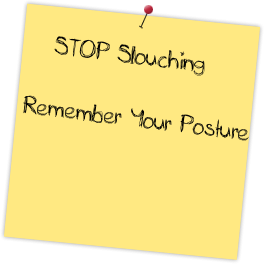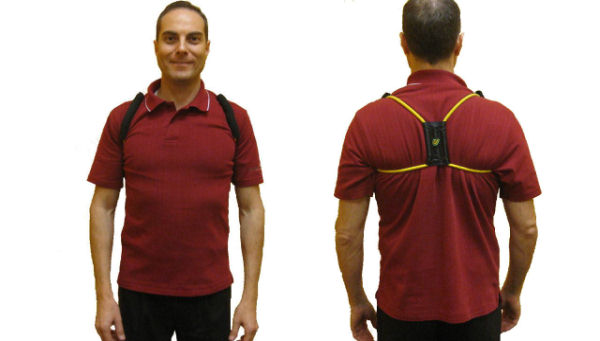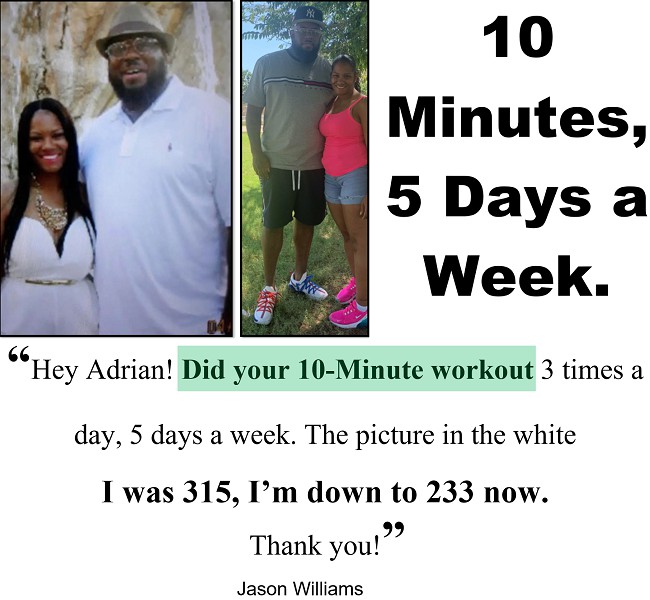6 Weird Tips to Fix Poor Posture

1. Breathing
There is breathing and there is right breathing. According to Aliesa George of CenterWorks.com there are 3 types of breathing:
- Chest breathing
- Belly breathing
- Back breathing
These basically refer to where you breathe into. Of the three, it is recommended to breathe into the back as a way of improving your posture.
Breathing into your back gives you access to a strong supported middle and can reduce pain in your neck and shoulders.Aliesa George
Here's a simple exercise to help you achieve this kind of breathing.

- Kneel down, then sitting back on your knees, bend forward till your forehead touches the floor.
- Your butt should be pressed against your heels and your hands resting on the floor beside your head.
- Breathing in this position, it is almost impossible to breathe into your stomach.
- Take a couple of deep breaths, each time trying to consciously expand your back and breath into it.
You are simply unlearning how you breathe and learning a new way.
You need to put in time practicing this. This is not a magic wand that will automatically turn things around. This requires weeks of practice for you to begin to adjust to this kind of breathing that will automatically perfect your posture
2. Use Triggers

Triggers constantly remind you to check your posture.
Here are 2 creative examples of triggers.
1. Use a Phone App
Apps like SmartPosture, Posture Reminder or Posture Protector will get you into the habit of better posture with phone vibrations 'triggering' you out of poor posture.
2. Stickers
Put up stickers around your home or work. For example, When you go to take something in the fridge, there could be a sticker reminding you to check your posture.
Get as creative as you can!
3. Use the Right Props
What do I mean by props? Anything that can help you achieve your goal. I will also include in this group anything you use regularly which could adversely affect your goal.
Let me explain.
If you work in an office and you have a bad chair and desk, your bid to improve your posture just got near impossible. Your chair and desk are part of your props here and should help you.
What I've just said is you should make use of a special ergonomic office chair for back pain plus a desk that can adjust to your size and working needs.
This does not end in the office. Check your favorite chair and your favorite spot at home. Does it support a good posture? If it doesn't, change it so it does or make a more appropriate spot your new favorite.
4. Make Bad Posture Painful
It's clear you cannot correct your posture with sheer acts of will. Many times a deterrent works better.
Remember the idea of carrot and stick? This here is using the stick. Let's assume you've identified one of your most persistent posture issues to be thrusting forward your head and neck while you work,
- Simply get a medical tape and while keeping your neck and shoulders in the correct position,
- Tape a strip of the medical take along your spine from your neck. You may need someone to do this for you.
- Here's what will happen, just as you are about to thrust out your neck in your usual manner, there will be a yank that will be commensurate to the force with which you attempted to thrust your head forward.
- Yes, it likely will be painful cos that's the idea. Will you do it again? Likely, but for each time you do it, you will receive your friendly yank.
The idea is by associating a bad habit with an unpleasant outcome, you will over time stop thrusting your neck forward, not because of your new found love for a correct posture but for your fear of the friendly yank.

Devices like the PostureMedic seen above ↑ give a not so painful reminder to keep your shoulders back once you start slouching.
5. Engage In Different Physical Activities
I stated earlier one of the things causing bad posture is the lack of coordination in the internal support structure, where some muscles work too much while some others don't work at all.
It's not just enough to engage in physical activity, it is important to engage in different physical activities. If you always engage in just one physical activity, you could be engaging just a set of muscles.
That will be like going to the gym and only using the dumbbells for your right hand. To ensure all the muscles in your body are properly engaged, engage in a diverse variety of physical activities.
6. the Alexander Technique
Can you quickly analyze your posture right now before continuing? How would you rate it? Do you think your posture is correct? Were you consciously aware of it before you were told to analyze it?
Being aware of your body is another great way to correct your posture. This is the foundation of the Alexander Technique.
Alexander technique teaches that by becoming aware of your body through the technique, you instantly know when your body is out of alignment and can therefore correct this immediately.
Alexander technique also teaches bad posture is caused by a lack of coordination in the internal support system.
The truth is while some muscles in our bodies overwork, some hardly get called upon to work. This is what it refers to as a lack of coordination.
Using Alexander Technique (an instructor has to guide you), you will learn to reduce the work load on some muscles and engage others more, causing a balance which will improve your posture.
Check out 52 reasons to try Alexander Technique and find a teacher in your area
